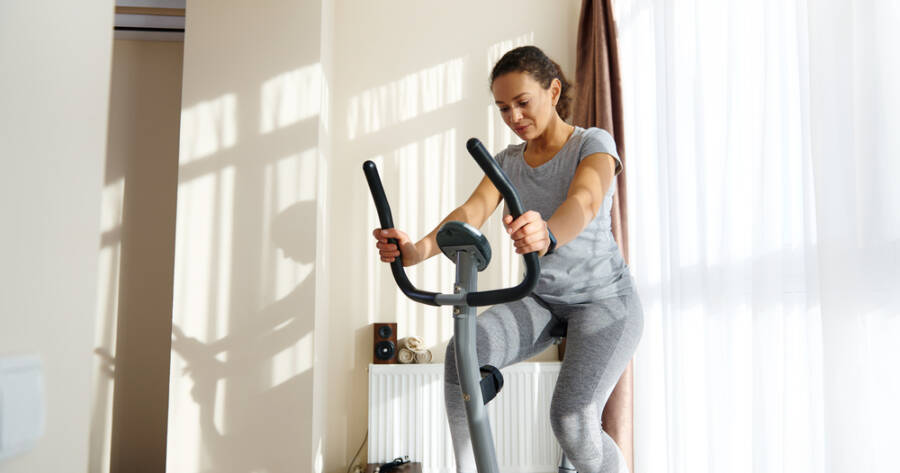Stationary bikes are a go-to choice for home and gym workouts, offering low-impact cardio that’s easy on the joints but effective for burning calories and building endurance. When choosing a bike, most people face a key decision: upright or recumbent? Both have unique advantages depending on your fitness goals, body type, and preferences. Understanding the differences between two types of exercise bikes can help you decide which one will give you the best results for your workouts.
Upright Bikes: A Classic Cardio Challenge
Upright stationary bikes resemble traditional road bicycles. The pedals are directly beneath your body, and the seat is smaller, requiring you to lean forward slightly, engaging your core and upper body while you ride.
These bikes are great for people who want a more intense workout that mimics outdoor cycling. Upright bikes generally allow for both seated and standing pedaling, which means you can vary your workout intensity and muscle engagement. They’re particularly effective for targeting the glutes, hamstrings, calves, and core.
However, upright bikes can be less comfortable for long sessions, especially if the seat is not well-padded or properly adjusted. The forward-leaning position may also place pressure on your wrists or lower back, which could be an issue for users with joint problems or mobility limitations.
Recumbent Bikes: Comfort Meets Function
Recumbent bikes feature a reclined seat with back support and pedals positioned in front of the body. This design allows you to sit in a more relaxed, ergonomic position, making them popular among beginners, seniors, and people recovering from injury.
The large seat and backrest reduce strain on the lower back, knees, and hips, making it easier for users with arthritis or limited flexibility to maintain longer workouts without discomfort. Recumbent bikes primarily target the quadriceps, hamstrings, and glutes, but with less activation of the core and upper body.
While they may not offer the same high-intensity experience as upright bikes, recumbent bikes are excellent for steady-state cardio, physical therapy, and building endurance at a manageable pace.
Which Bike Burns More Calories?
When it comes to calorie burn, upright bikes typically have the edge. Because they engage more muscle groups—especially the core and upper body—and allow for standing pedaling, they can help you push harder and elevate your heart rate more quickly.
However, the difference in calorie burn between the two types of bikes depends largely on how hard you work. A high-intensity ride on a recumbent bike can still burn a substantial number of calories, especially when using resistance settings or interval programs. Consistency and effort often matter more than the type of equipment.
For users just starting out or returning to exercise after a break, the comfort and ease of a recumbent bike may lead to longer workouts, which can balance out any difference in intensity.
Choosing the Right Bike for Your Goals
The best bike for you depends on what you’re looking to get out of your workout. If your focus is high-intensity training, building core strength, or simulating outdoor cycling, an upright bike might be the better fit. These bikes allow for interval training, resistance-based climbs, and a broader range of movement.
On the other hand, if your goals include rehabilitation, low-impact endurance training, or comfortable long rides, a recumbent bike may be more suitable. It provides a stable, supportive position for users with balance concerns or chronic pain.
Also, consider space and design. Upright bikes generally take up less room, making them a better option for small apartments or home gyms with limited floor space. Recumbent bikes are larger but often quieter and more stable, which can be helpful for shared living spaces.
Regardless of your choice, both types of bikes offer cardiovascular benefits, improve lower-body strength, and can be part of a well-rounded fitness plan.
The Best Bike Is the One You’ll Use
When comparing upright and recumbent stationary bicycles, the “better” choice really comes down to your individual needs and goals. Upright bikes deliver a more traditional and challenging ride, while recumbent bikes offer superior comfort and joint support.
Instead of chasing the most intense option, choose the bike that encourages consistency, minimizes discomfort, and keeps you motivated. Whichever style you select, regular cycling can boost your heart health, improve endurance, and support a strong, active lifestyle—one ride at a time.

